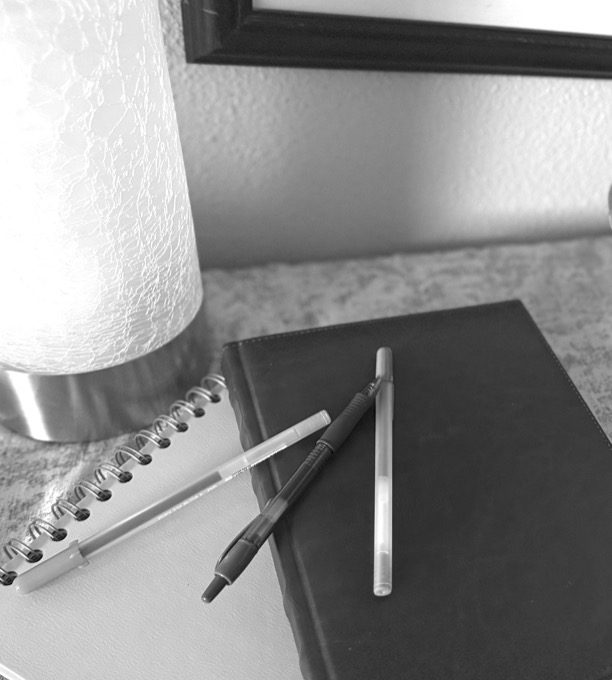Musings on Mindfulness
Over the past few months—and during yet another professional transition, this time into higher education—I’ve been reflecting on how best to introduce the concept of mindfulness to my community. I can honestly say that every idea or draft I initially developed felt incoherent, shaped more by the paradoxical nature of mindfulness itself: powerful and transformative in the right hands, yet potentially misleading or even harmful when misused. And yet, it’s a topic everyone seems to be discussing.
However, what I don’t often see—other than well-intentioned efforts that sometimes appear more aligned with securing tenure than with practical impact—is a set of substantial, evidence-based systems that apply mindfulness beyond the typical conversations about performance anxiety. Even after earning my dream job, I’ve continued to maintain my clinical contract work on a part-time basis in addition to my life coaching business, Inspired Flute. It wasn’t until a recent, deeply personal loss that I had a somewhat comical realization: as a clinician, my role is not to complain or preach, but to share what I believe in, and, above all, to empower others.
So, now that I’ve found grounding and purpose in what I would like to share, my hope is that the next several articles will give you all practical and evidenced-based support systems to help you on your own musical journey. What I’ve come to realize through my own professional clinical practice and life coaching program is that the art of journaling has been a very profound experience for all my clients.
Journaling: Background and Research
So, journaling…what about it? Throughout my life, this form of self-expression has always felt somewhat daunting. My paternal grandmother’s friendship and association with Anne Frank’s family in Amsterdam during World War II—and the eventual publication of Anne’s now-iconic diary—cast a long shadow. On top of that, my grandmother had her own passion for writing and began working on her memoirs later in life. Because of these influences, I convinced myself—perhaps even gaslit myself—into believing that meaningful journaling required profound life experience.
Well, life did eventually give me those experiences. But when it came time to put them on paper, I still found it intimidating. Being dyslexic only added another layer of difficulty.
There are three internal monologues I help my students, therapy clients, and coaching clients identify: the people pleaser, the perfectionist, and the super-human. Personally, once I let go of these monologues, I was able to find ways to finally put pen to paper over the last three years. But, first, let’s talk about the empirical research that supports why this is so therapeutic.
Beginning in the late 1980s, psychologists began to study the power of writing on both physical and emotional levels. Dr. Pennebaker, professor emeritus at the University of Texas-Austin (1997) found that writing, rather than talking, in therapeutic settings helped reduce clients’ inhibitions. Their research demonstrated that expressing one’s life experiences through writing was linked to positive changes in both the autonomic and central nervous systems. By decreasing anxiety, depression, and other mental health symptoms, psychiatrists had finally found reliable and qualitative evidence that this form of expression helped clients.
Petrie, Booth, & Pennebaker (2008) found journaling also helped within biologic functions. Their study found that individuals who had high inhibition and emotionally suppressed their feelings showed lower immune helper CD3 and CD4 T lymphocyte levels than in groups who participated in therapeutic journaling, which are essential in aiding bacterial and viral infections within the human body. In similar studies by Greenberg and Stone (1992), they found that control groups who had admitted to having undisclosed trauma participated in short-term therapy groups, in which bodily symptoms, not specific traumas, were discussed. Their study found that by expressing these physical manifestations in writing that they began to decrease.
As with any positive body of research, there is always a counterpoint. Several studies have suggested that journaling or writing about traumatic experiences can be just as distressing as the trauma itself. In some cases, it may even create a feedback loop within the client’s mind and body, which may prevent meaningful healing. For example, Futterman, Kemeny, Shapiro, and Polonsky (1992) found that when clients in control groups wrote only about their traumatic experiences, there was no measurable change in psychological outcomes. However, when a positive stimulus was incorporated into the writing process, there was a significant improvement in mood and behavior across all three control groups.
Through additional studies by Lepore et al., (2002), they included journaling in the therapeutic system. This study found that expressive writing led to increased sustained attention skills, the ability to synthesize information and generalize this behavior in their environments. This restructuring also allowed for client to start identifying subjective experiences, which led to further physical awareness of their illness or symptoms, and, finally, their overall behaviors and choice of action.
A Healing Approach to Mindfulness Journaling
These research findings are where I situate myself in my own clinical work, and I hope the following explanation helps clarify my approach. When I ask clients to journal, it’s not in the traditional “Dear Diary” format. In my professional experience—and as supported by research—simply writing about the experience itself does little to strategically support the client’s healing. Instead, in both my clinical and coaching practices, I require clients to identify three to five things for which they are grateful. This intentional focus on a positive stimulus helps hold clients accountable and prevents them from falling into patterns of victimization in response to daily struggles.
Next, I ask clients to describe the emotions they’ve felt during the day or week. These reflections are usually expressed in short, incomplete sentences—intentionally so—as rumination can occur easily and is ultimately counterproductive. After that, I ask them to describe what their physical bodies have been feeling to strengthen the mind-body connection.
These connections often manifest as what I refer to as limiting beliefs—the internal statements of self-loathing or self-hate that many of us experience at some point. These typically include phrases like, “I’m not good enough,” or “I’m not worthy.” The variety of statements I hear regularly can be haunting. However, from a clinical standpoint, I’ve found that uncovering these limiting belief systems is often the key to interrupting the repetitive loop of trauma and initiating healing.
Once the limiting beliefs have been acknowledged, I ask clients to write and affirm what I call the inspired truth. This includes the direct opposite of the limiting belief, along with the therapeutic acknowledgment that these beliefs are not their fault. This process allows me to validate their experiences without verbally revisiting the traumatizing moment or possibly retraumatizing them.
But again, where is the change? Anyone who has worked with me—academically, professionally, or personally—knows I often use the term inspired actions. This is where I apply solution-focused strategies and Cognitive Behavioral Therapy-based techniques to help clients create a short list of actionable behaviors. These actions serve as what I call their “proof and truth” that the therapeutic process is working. Finally, I ask them to write letters of expression, which are essentially letters written towards someone or even versions of their younger self. In music therapy I use as this final layer of a song-writing and lyric analysis exercise in my private practice.
That said, I now believe that one does not need to be in a paid service to benefit from this process. However, I strongly recommend working collaboratively with a counselor, therapist, or life coach to ensure the process is safe, supportive, and effective. This is especially important for anyone who has experienced significant adversity.
This system is one I use myself, and I’m finding that the flutists I work with through Inspired Flute also find it practical and successful. It helps them hold themselves accountable and take responsibility for both their personal lives and their flute careers.
Mindfulness Journaling Example
Below is a hypothetical “flute” response to demonstrate the procedure.
3–5 Things I am grateful for:
- My music
- My flute that is in working order
- The opportunity to play today because…
What emotions have I felt today? Sadness, frustration, embarrassment
Do I know why? I missed an entrance in rehearsal, and it was a large solo.
What has my physical self-experienced? Arm tension, brain fog, and back pain.
What are the limited beliefs: I am not good enough. I will never have a full-time job, etc.
What are the Inspired Truths: I am good enough. I am working and doing my best every day.
Inspired Actions:
- I will work with a metronome more.
- I will find safe people to play this in front of.
- I will record myself daily.
- I will engage in more self-care.
- I will do short spurts of practice.
This description is simple, but as you can see, this is a series of consistent returning and recurring themes. And finally, it allows for a Dialectic Behavioral Therapy perspective of radical acceptance that your manifestation will come true if you do not focus on the limiting belief but instead focus on the inspired actions and truths. I hope that this style of journaling can be helpful in your personal career as a flutist. Use, adapt, create, and explore your musical journey by utilizing the following script below in the attached PDF document.
Remember always, this style of journaling isn’t about ruminating or reliving trauma. It’s about recognizing where we are, reframing what we believe about ourselves, and taking inspired, tangible steps forward. Whether you’re navigating a rehearsal mistake, personal grief, or professional uncertainty, this process meets you where you are and then gently pushes you toward where you want to be.
So, I invite you: try it. Explore the structure, make it your own, and see what shifts. Your musical voice deserves not just to be played, but to be heard—first, by you.

